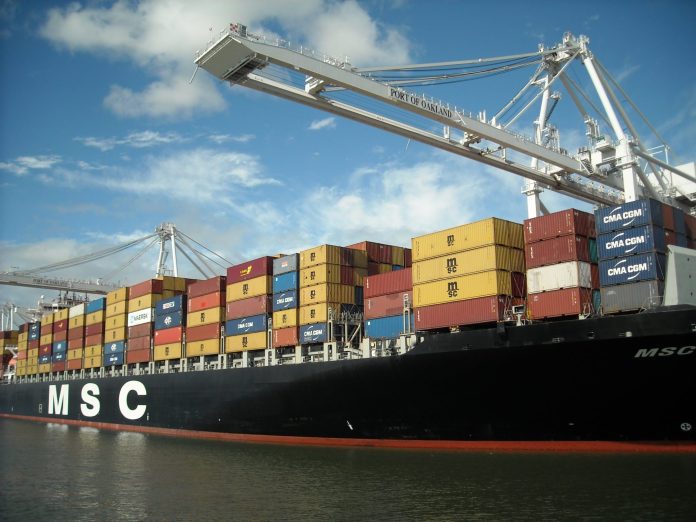Internet of things ‘essential’ part of digital transformation strategy
Cargotec Corporation is a Finnish company that makes cargo-handling machinery for ships, ports, terminals and local distribution. The firm has been implementing a digital transformation process over recent years in a move to improve operation efficiency by embracing smart manufacturing. In an interview with Enterprise IoT Insights, Tuomas Martinkallio, Director, Digital Service Enablers, at Cargotec, explained how Cargotec the process in a conversation with Enterprise IoT Insights.
Q: When did the company decide to implement IoT technology and why?
A: One of Cargotec’s strategic cornerstones and must-win battles is digitalization. Building and tapping into the IoT technology is an essential part of that strategy. Planning for that and for other digitalization steps started already in the early 2010s, when Cargotec’s present strategy period (covering years 2015-2018) was formulated.
IoT technology and solutions thereof are necessary in realizing our strategic objectives. We use IoT technology to collect and analyse data that we can then use when creating new services. We aim to have all our new equipment connected by 2018. IoT is one of the key applications utilising that connectivity.
Q: What are the main challenges that will be solved through the implementation of IoT technology and solutions?
A: Customers seek ways to optimise their operations with intelligent cargo handling solutions, while valuing safety, fuel efficiency and sustainability in their operations. Helping our customers to succeed is our main driver, and IoT solutions are one of the factors that can help realise those needs. We provide various digital solutions in the areas of software, automation and intelligent products. IoT and connectivity can be especially beneficial when developing service business and solving challenges on that area.
Q: You have recently signed a connectivity agreement with Orange Business Services. How does the company expect this IoT contract will impact in the firm’s business and revenues?
A: We expect positive results from the cooperation with Orange. Their connectivity services used with our solutions will bring us better collaboration during daily operations. We can, for example, enable effective and reliable monitoring for our equipment, and the information can then be used to optimise maintenance work and secure high equipment uptime. Most importantly, connectivity together with our IoT solution is a key enabler for us to move to support customers when they move forward to proactive maintenance. IoT also helps develop new insightful data-driven services.
Q: How has your company approached the digital transformation process?
A: Digitalization is one of Cargotec’s key focus areas on our way to become the leader in intelligent cargo handling. The transformation does not happen overnight, but requires a significant amount of work.
We put a big effort in building new customer-oriented digital offerings, digitizing our internal processes for better internal efficiency, and we also invest significantly in our people and own capabilities.
The digital transformation happens through collaboration, which means that our smarter solutions are built together in cooperation between our employees and our customers.
Q: How has connectivity and IoT changed the way you run your business?
A: Cargotec has delivered connected equipment also before the digitalization initiative, so this is not a new topic as such. Combining IoT solutions to connectivity has enabled us to get more insight about how our equipment actually performs on the field. This, in turn, has benefited our R&D to create more robust equipment fit for the task.
IoT has also provided us benefits in terms of internal efficiency. For example, we can alter our maintenance schedules based on the actual usage of the equipment, thus making it possible to perform maintenance work only at the time when it is actually needed.
Q: What were some of the problems you needed to solve?
A: Cargotec is a global company, and in our actions we always comply with local regulations and requirements. This is also the case with IoT-related issues. It has not been a problem as such, but is something that we need to take into consideration continuously.
Another thing is customer needs, which vary a lot based on the industry, application and local market. One size doesn’t fit all, and a lot of flexibility is needed. This of course is also an interesting incentive for us: how to develop solutions that can answer to a need in varying situations.
Q: Can you take me through the technologies used to solve those problems?
A: We use cloud technologies extensively to run our IoT services. Global mobile connectivity is in a key role when providing services to all parts of the globe. We cooperate with companies such as AWS, Cloudera, TCS, and Orange on these issues. When innovating new technical solutions or service concepts, we also work together with start-ups and smaller companies.
Q: What, if any, problems did you encounter through the implementation?
A: Mindset change is the most obvious one as IoT enables a lot of things that are outside our normal domain. Cargotec is known for its high quality equipment and global service but upgrading those to digital era takes its time.

